Key takeaways
- Activist teachers are advocates for justice, blending academic growth with social consciousness in their classrooms.
- Teach for America’s mission emphasizes educational equity and leadership development, encouraging volunteers to view themselves as changemakers.
- Successful collaboration thrives on shared goals and open communication, leading to enriched educational projects and mutual growth.
- Reflecting on collaborative experiences highlights the importance of patience, listening, and personal growth in the journey towards educational justice.
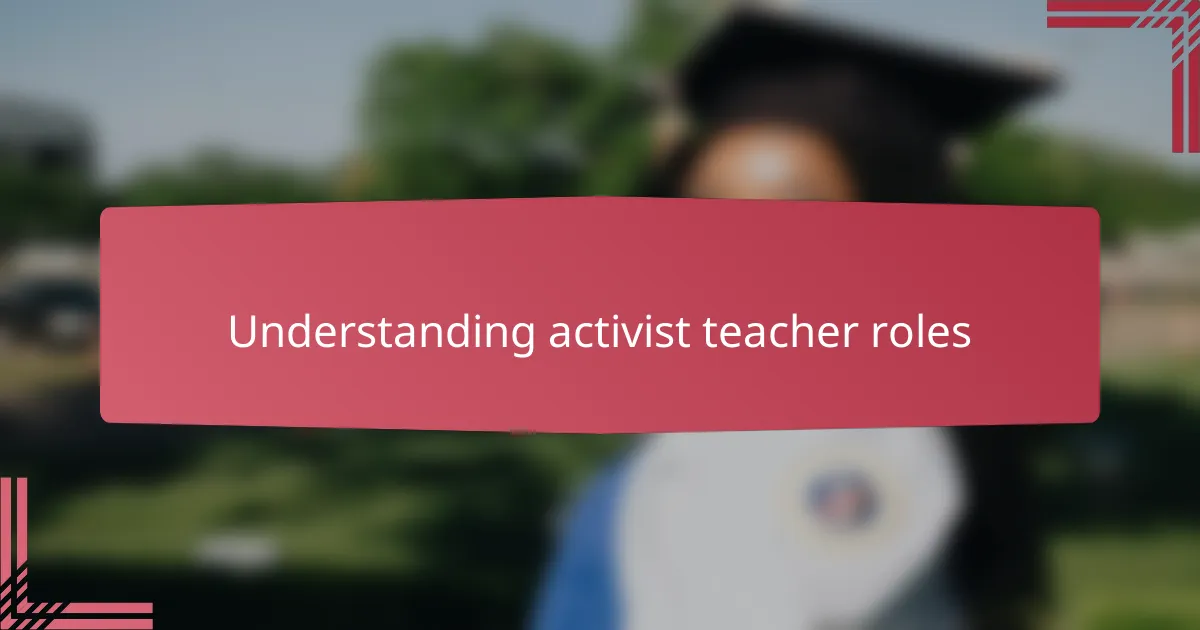
Understanding activist teacher roles
Understanding activist teacher roles starts with recognizing that these educators are more than just conveyors of knowledge—they are advocates for justice within their classrooms and communities. I’ve seen firsthand how their commitment to equity shapes not only what they teach but how they engage students in conversations about systemic challenges. Have you ever wondered what it takes to balance curriculum goals with the urgent need for social change?
From my experience working alongside activist teachers, their roles often extend beyond lesson plans into mentorship and community organizing. They build bridges between students and larger movements, fostering awareness and empowerment in ways that traditional teaching roles may not. This kind of work requires emotional resilience and a deep belief in the potential of every young person.
It’s a demanding path, no doubt. Yet, there’s something profoundly inspiring about teachers who view their classrooms as spaces to nurture both academic growth and social consciousness. Their activism isn’t just an add-on—it’s woven into their daily practice, shaping how they respond to challenges and celebrate victories with their students.
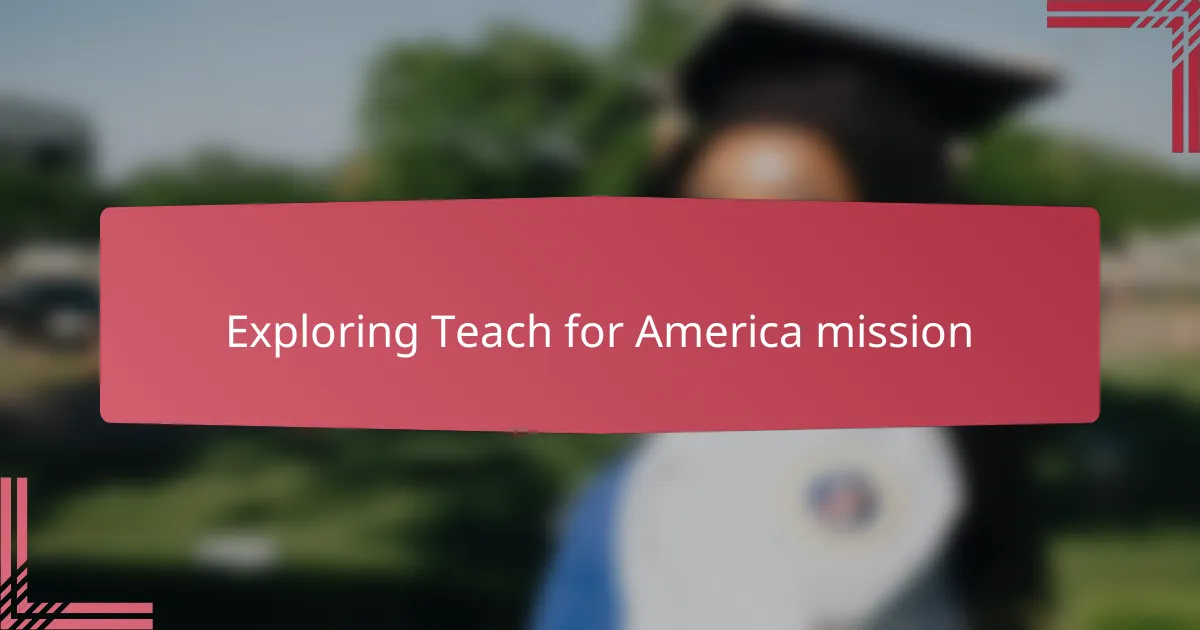
Exploring Teach for America mission
When I first delved into the Teach for America mission, I was struck by its dual commitment: to expand educational opportunity and to develop leaders who will transform the system. This mission isn’t just about placing teachers in classrooms; it’s about cultivating a movement focused on equity and long-term impact. Have you noticed how this purpose shapes every interaction with the communities involved?
Working with Teach for America volunteers, I often reflected on how their mission influences their mindset. They step into challenging environments knowing they’re not just teaching academic content—they’re carrying a responsibility to uplift and inspire. It reminded me that transformative education goes beyond textbooks; it thrives on possibility and persistence.
What makes this mission truly compelling is its emphasis on leadership development. These volunteers are encouraged to see themselves not only as teachers but as changemakers. Witnessing their growth from novices to confident advocates reaffirmed for me that Teach for America’s mission reaches far beyond the classroom walls.
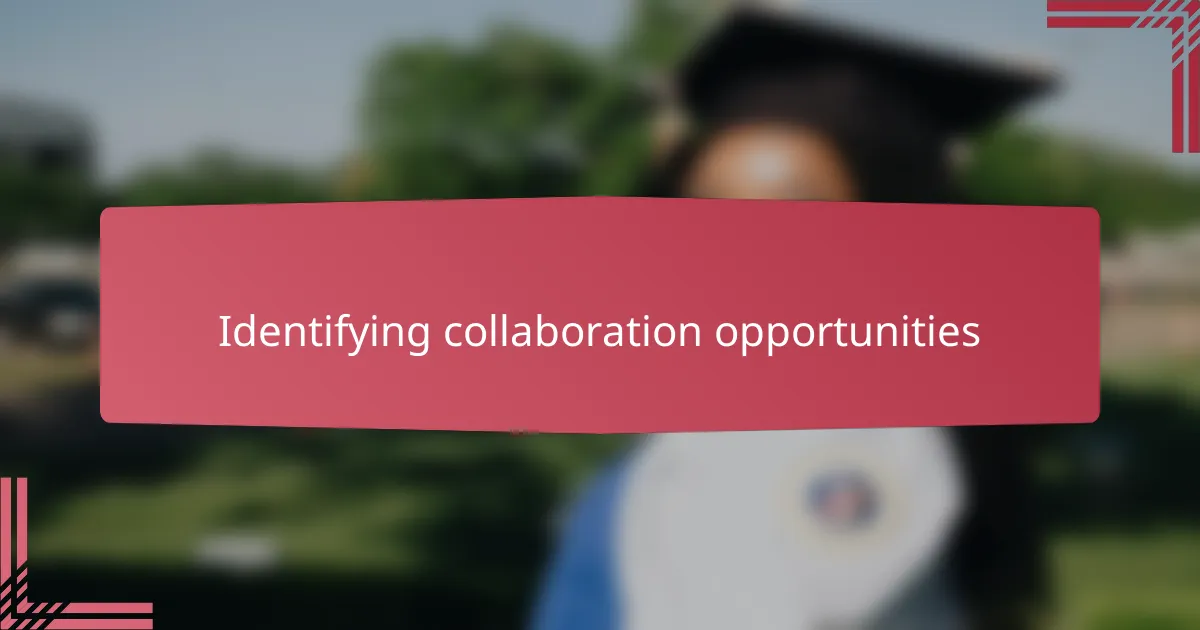
Identifying collaboration opportunities
Spotting where collaboration can happen often means paying close attention to shared goals. When I first connected with Teach for America volunteers, I realized how much our commitment to educational equity overlapped. Have you ever noticed how those moments of alignment spark the best partnerships?
Sometimes, opportunity comes from simply listening. I recall a meeting where a volunteer mentioned challenges with engaging families, which immediately resonated with my experiences. That single insight opened the door to brainstorming joint strategies that felt organic rather than forced.
I’ve found that collaboration thrives when we remain open to unexpected connections. What initially seemed like separate efforts soon revealed common ground—whether in curriculum design, community outreach, or advocacy. It’s about being curious and willing to explore the ‘what ifs’ together.
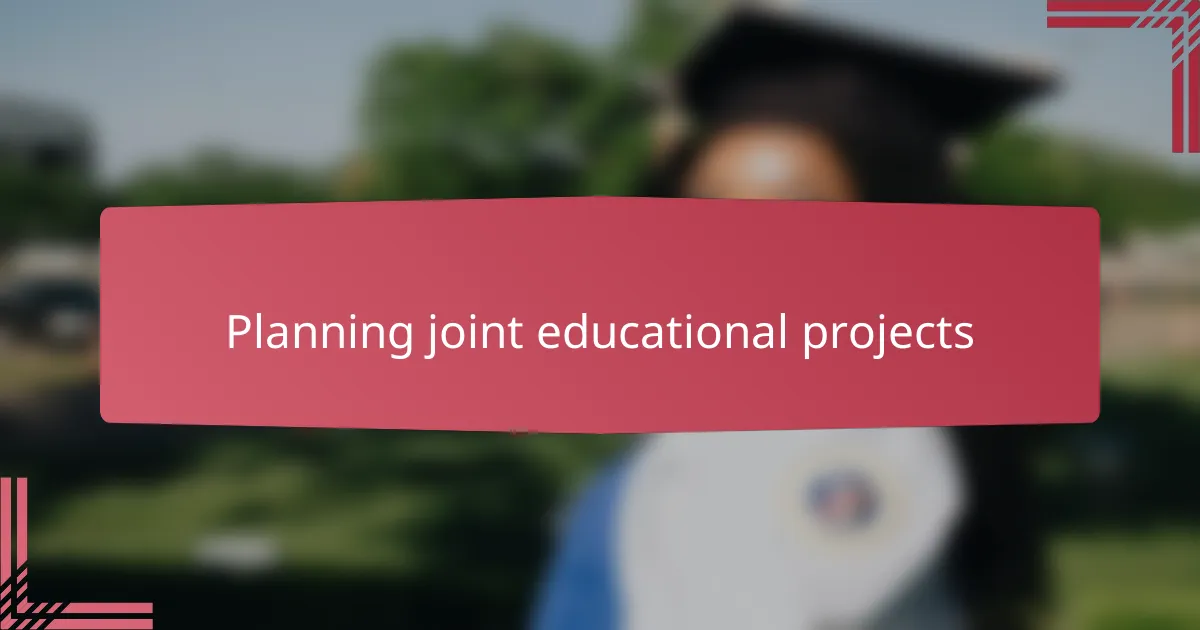
Planning joint educational projects
Planning joint educational projects required us to be intentional about aligning our strengths and goals. I recall sitting down with a Teach for America volunteer, sketching out ideas on a whiteboard, and realizing how our diverse experiences enriched the possibilities. Have you ever noticed how brainstorming in such collaborative spaces not only generates ideas but also builds trust and excitement?
One thing I learned quickly is the importance of defining clear roles while staying flexible. For instance, when we co-developed a social justice curriculum, I took charge of integrating community history, while the volunteer focused on student-led activities. This balance made the project feel truly shared and empowered us both.
What surprised me most was how planning together sparked creative solutions that neither of us would have reached alone. It taught me that collaboration isn’t just about combining efforts—it’s about weaving perspectives into something stronger and more meaningful for the students we serve.
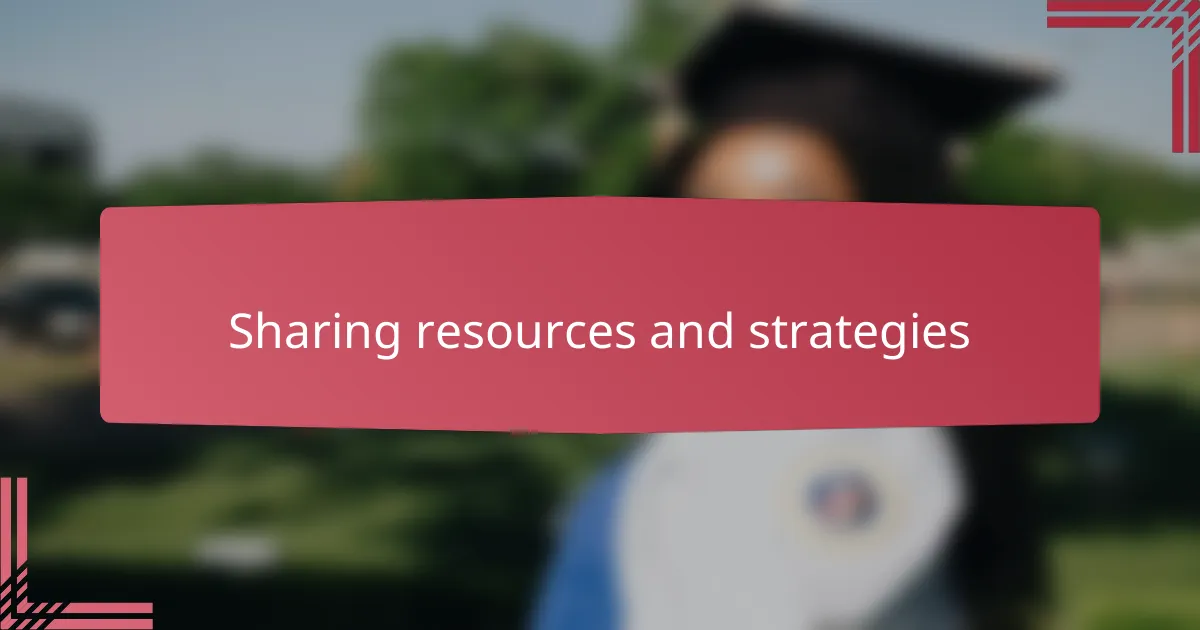
Sharing resources and strategies
Sharing resources with Teach for America volunteers felt like opening a door to fresh ideas and proven strategies. I remember one afternoon when a volunteer introduced me to a digital tool that made tracking student progress so much easier—it immediately changed how I approached assessment. Have you ever experienced how a small resource can shift your entire teaching practice?
Strategy exchanges often happened spontaneously, whether during planning sessions or casual hallway chats. One volunteer shared their approach to culturally responsive teaching, sparking a conversation that led me to adapt some of my lesson plans. It struck me how these moments of sharing remind us that we’re never working in isolation—our collective wisdom is powerful.
What stood out most to me was the mutual eagerness to learn and adapt. We didn’t just swap lesson plans; we exchanged philosophies, concerns, and hopes for our students. This created a dynamic of trust and growth, making the collaboration feel less like a task and more like a shared journey toward meaningful change.
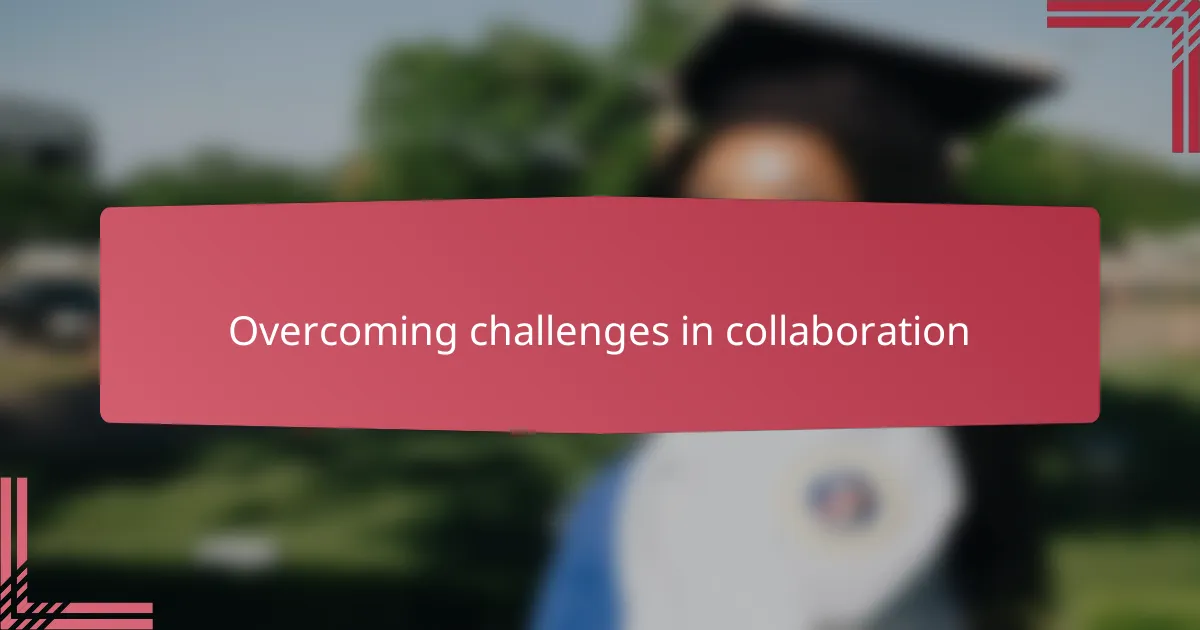
Overcoming challenges in collaboration
Challenges in collaboration with Teach for America volunteers often surfaced when our approaches to urgent issues didn’t immediately align. I remember feeling frustrated early on—how do you reconcile different pacing and perspectives when the stakes feel so high? Yet, those moments pushed me to listen more deeply and find common ground beyond initial assumptions.
One real hurdle was navigating inconsistent schedules, which made spontaneous meetings tough. I found that setting clear communication channels was a game-changer; even quick check-ins helped build a steady rhythm. Have you ever experienced how a simple message or shared calendar invite can turn chaos into coordination?
What surprised me most was how vulnerability in admitting challenges opened doors for honesty and innovation. When I openly discussed my struggles with classroom dynamics, volunteers responded with empathy and creative solutions. It reminded me that overcoming obstacles isn’t about going solo—it’s about leaning on each other’s strengths to keep moving forward.
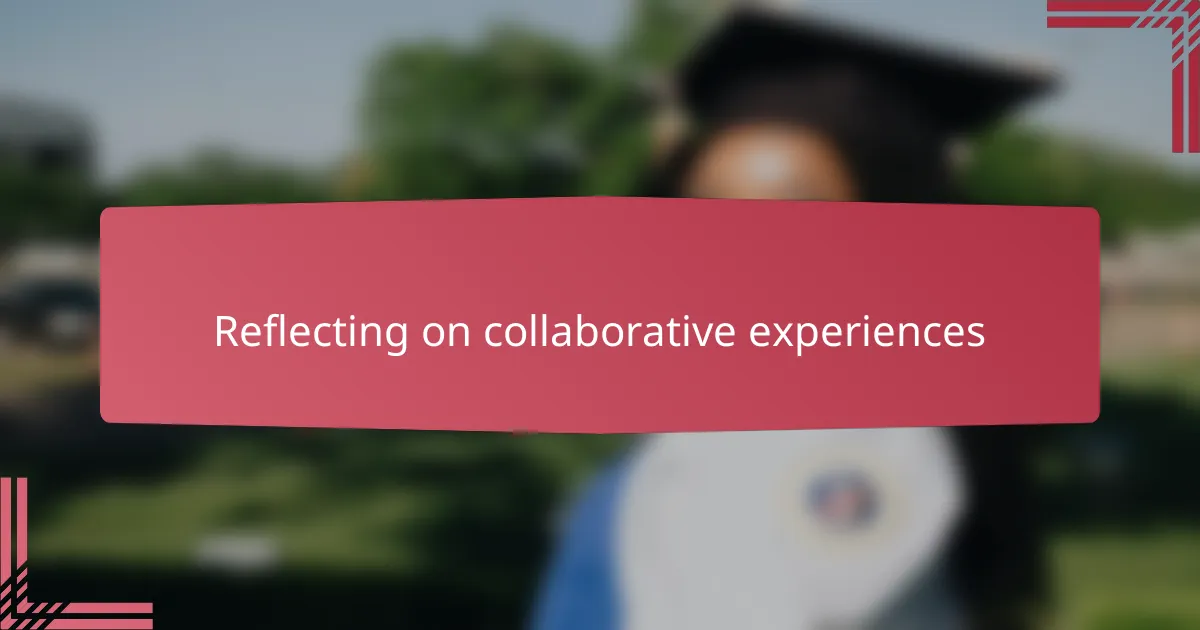
Reflecting on collaborative experiences
Reflecting on my time collaborating with Teach for America volunteers, I often think about how those interactions challenged my assumptions about teamwork. Have you ever noticed how true collaboration reveals not only shared goals but also the subtle differences in approach that can spark growth? I remember one moment when a volunteer’s fresh perspective on student engagement pushed me to rethink a lesson I’d been using for years.
Sometimes, looking back, I realize that the toughest discussions were the most valuable. There were times when frustration crept in—how do you reconcile urgency with patience? Yet, those moments taught me the importance of patience and listening, reminding me that collaboration is as much about relationship-building as it is about outcomes.
What stays with me most is the sense of mutual learning and respect that grew over time. Reflecting now, I feel a deep appreciation for how our joint efforts weren’t just professional tasks—they became opportunities for personal growth and renewed commitment to educational justice. Doesn’t that make the challenges worth it?